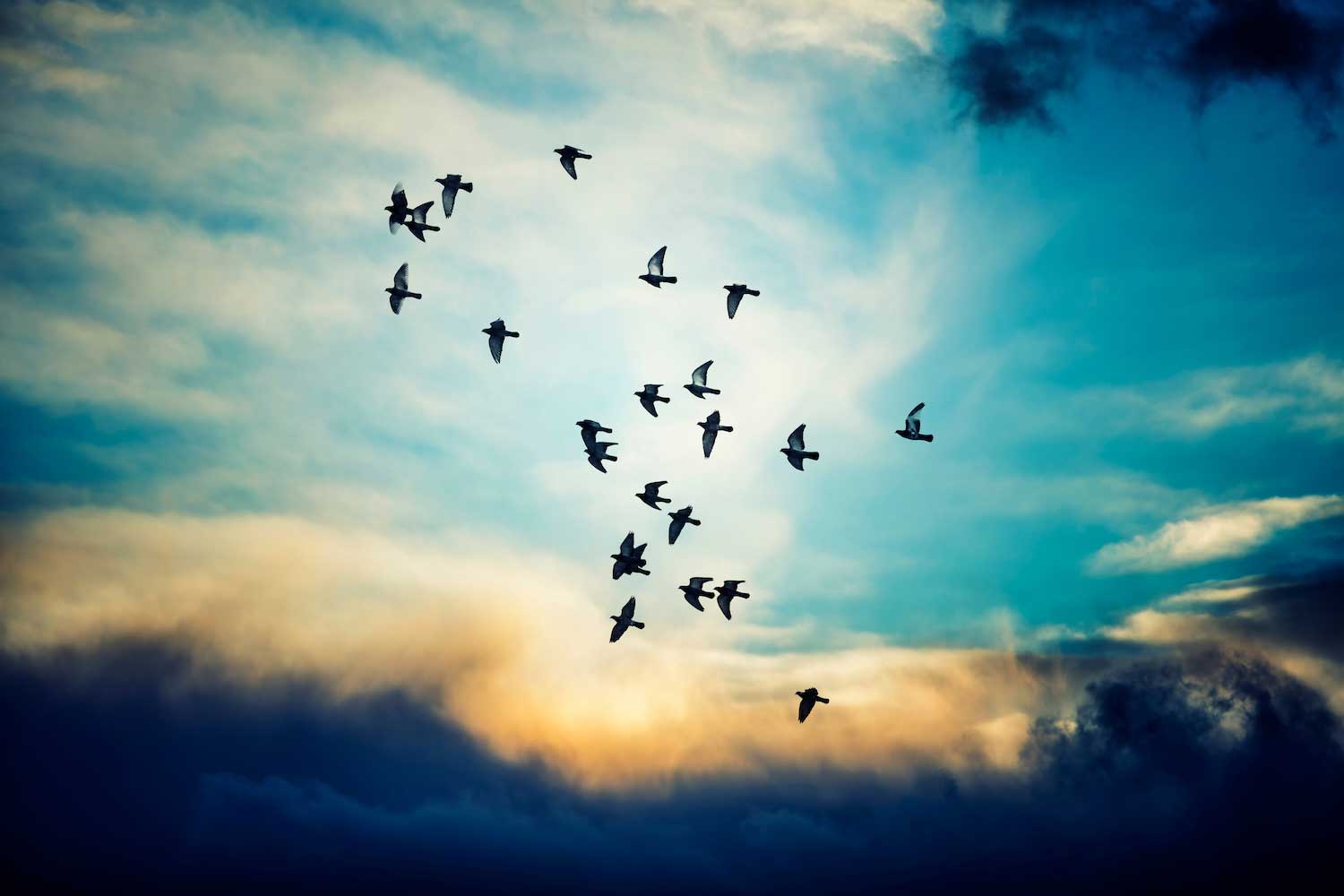Nature curiosity: Why do birds migrate at night?

If you were planning a cross-country or cross-continent road trip, when would you plan to start your journey? Would you get up with the sun and head out at first light, or would you spend the day preparing and hit the road when the sun slips below the horizon?
Traveling by day may seem like a better choice for our road trips, but many of our migratory birds fly by night. In fact, most birds that migrate do so at night, according to the National Audubon Society. Why? Scientists haven't determined an exact reason, but nocturnal migration does provide some benefits.
The light from the moon and stars at night help migrating birds chart their course, and this is believed to be the primary reason many birds opt for night flight. Flight itself is also easier at night because the atmosphere is more stable, the Audubon Society reports. This is especially beneficial to small birds like warblers and other songbirds, which don't fly very rapidly and are aided by the calmer air. In addition, the cooler air may also help birds avoid overheating on such long flights, plus there's fewer predators out at night.
Migration is far from universal in the bird world, but thousands of species of birds rely on the strategy. Most birds in North America migrate to some extent between their summer breeding grounds and overwintering grounds, according to the National Audubon Society.
Most land-based birds migrate at night, including cuckoos, flycatchers, orioles, sparrows, thrushes, warblers and vireos, reports Colby College. Birds that migrate during the day include falcons, hawks, hummingbirds, pelicans, swallows and swifts. What these daytime migrants have in common is that they are all strong flyers and can easily adapt and take advantage of the thermal air currents that are more common during the day.
No matter what time of day they do it, these journeys can be impressive. Some birds log tens of thousands of miles a year migrating. Take the Arctic tern. They fly back and forth between their breeding grounds in the Arctic and their wintering grounds in Antarctica, a round trip of more than 49,700 miles, according to the Audubon Society. Over the course of their lives, which can be 30 years or more, Arctic terns can migrate a distance equivalent to three trips to the moon and back!
Ruby-throated hummingbirds log thousands of miles on migration, and some will fly nonstop for more than 500 miles as they cross the Gulf of Mexico, Journey North reports. Not all hummingbirds choose this route over water, however. Some will make a longer flight following the coastline to reach their wintering grounds in Mexico and Central America.
The world-record holder for longest nonstop flight is the bar-tailed godwit, which can fly almost 7,000 miles without a break, according to the National Audubon Society. The trip takes about eight days, and they don't stop to eat or to rest during the flight.
No matter how far they are traveling or what time of day they are flying, migration is a dangerous journey, and many birds don't survive these arduous trips. Sometimes harsh weather conditions along the way cause birds to perish, but human activity also contributes to the danger of these long-distance flights. As many as 1 billion birds in the United States alone die each year as a result of window strikes, the National Audubon Society reports.
You can help migrating birds safely complete their journeys by making your windows more visible to birds by placing decals, translucent tape or ultraviolet stickers on your windows, the National Audubon Society advises. An even easier way to help the birds is by turning off your lights at night. Artificial light can confuse or disorient birds in flight, so turning off any unnecessary lights between dusk and dawn makes the trip a little easier for them. In addition to making it less likely they will fly into windows, this helps them save energy because the lights can draw the birds off course, making the journey even more difficult for them to complete.
